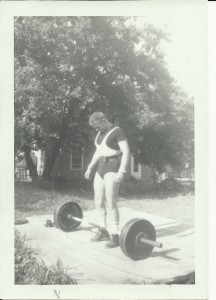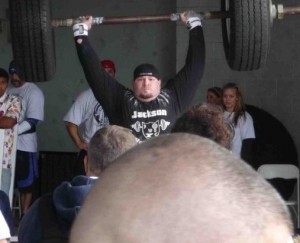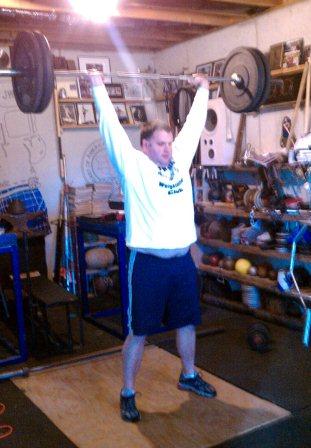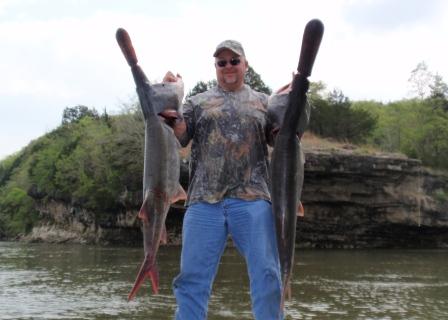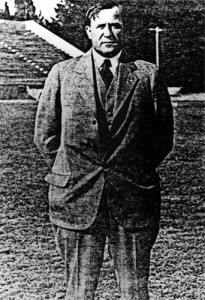
Dr. Wilbur Bohm, pioneer of Sports Medicine
by Thom Van Vleck
I recently did a story on Dr. Russell Wright who was pretty well know in the 50’s, 60’s, and 70’s in the weightlifting world for his work in sports medicine. In that article I mentioned Dr. Wilbur Bohm. Dr. Bohm was certainly Dr. Wrights inspiration in terms of Bohm’s early work in sports medicine leading the way. Dr. Bohm wrote nearly 2 dozen books on athletic training and was the first every full time sports physician for a professional team. He worked for the Cardinals, the Redskins, and the Reds, just to name a few. He was a founding member of the National Athletic Trainer Association and was the first ever inducted into their hall of fame in 1962.
Wilbur Bohm started out as the Washington State University head athletic trainer before becoming an osteopathic surgeon in 1919. He is credited with helping define sports medicine by writing books and filming a 1941 documentary on charley horses and sprained ankles. Bohm – with Jake Weber, Billy Morris and the Cramer brothers – was a member of the first athletic training squad to serve a U.S. Olympic Team, in 1932 in Los Angeles. You will recognize the name “Cramer” as the name of the company that makes training supplies. I use Cramer spray tacky all the time!
Bohm did so much and was involved in so much a book could be written about him. I would like to focus on a couple of stories on him.
First, he was friends, possibly best friends, with the man I affectionately refer to as the “Phantom of the Anvil”. Several years ago I was at the Rec Center here at the school I work at (A.T. Still University) and saw this picture on the wall. Since that time I have devoted a lot of time trying to figure out who this man was. I have a couple leads, and someday I WILL figure this mystery out. I do know know this man left school before graduating to join the war effort in WWI. He was legendary playing football and there are many stories I have found on him that include a 70 yard drop kick documented in a game (I know, seems impossible) and stories of him dragging numerous opponents down the field refusing to be tackled. He was said to be 6’6″ tall and he had a build that was very good for his day. But that story is for another day and for now, he’s the Phantom. You will find this photo in the JWC gym and in the Dino Gym.
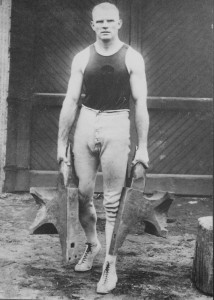
The Phantom of the Anvil circa 1918 (notice the skull and cross bones on his shirt, that was the school sports logo)
It was through the “Phantom” I learned about Dr. Bohm. As I have researched the Phantom, I have found his connection to Dr. Bohm and that opened me up to the amazing accomplishments of Dr. Bohm and his connection to Dr. Wright. It seems that the Phantom and Dr. Bohm were good friends and played football, baseball, threw shot and discus and participated in other sports with the schools teams. Yes, back then, the medical school had sports, even a hockey team…and less surprisingly a golf team! Dr. Bohm was quite an athlete as well and a very big man in those days. I found one listing of him at 6’4″. He threw the shot and discus at the Drake Relays, one of the most prestigious and oldest track & field meets in the world! Some day, I’ll learn the mystery of the Phantom of the Anvil and when I do, Dr. Bohm’s story will be a part of it.
The second story on Dr. Bohm I’d like to share relates to his work in the 1932 and 1936 Olympics. He served as the team physician in those Games and if you recall, it was the 1932 Olympics where the modern Olympic lifting began. The lifts were cut to three that year (Clean & Press, Snatch, and Clean & Jerk) and it appears to be a watershed moment in terms of Olympic lifting’s popularity. You may recall that Bob Hoffman attended the 1932 Olympics and when he returned to York he started York Barbell. Karo Whitfield also attended the 1932 Olympics and as a result he made a life long friendship with Hoffman and the York Gang and returned to the Atlanta area and started a legendary gym, ran hundreds of bodybuilding and weightlifting meets, and trained thousands. That list includes Paul Anderson, Harry Johnson (1959 Mr. America) and ran meets that saw Joe Dube’, Frank Zane, Boyer Coe, and many, many others get their feet wet. So, that 1932 Olympics had three very important people it the sports world: Dr. Bohm, the “Father of Sports Medicine”, Bob Hoffman, the “Father of American Weightlifting”, and Karo Whitfield, “The Bob Hoffman of the South”.
The third and final story has to do with what may be Dr. Bohm’s greatest accomplishment. In the Museum archives of A.T. Still, there is a collection of Dr. Bohm’s works. Some are original type written copies of some of his books, personal notes, and a very interesting book that includes the raw data he collected for a study he did entitled “How Champions Train”.
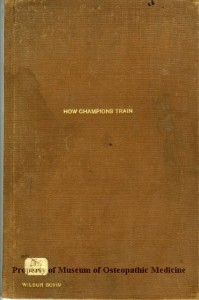
"How Champions Train" by Wilbur Bohn, D.O.
The book itself is not very long and it’s message is really quite simple. Coaches need to train athletes as individuals with different needs. This may seem pretty common sense, but before this they would often train athletes with special diets that would be extreme in design and workout programs that weren’t very specific and overtraining was the norm. The real treasure is the “scrap” book that is with the original manuscript that holds all the questionnaires from most of the track athletes at the 1936 Olympics. Each athlete had been given the questionnaire at the Olympics and had autographed each one. There are also many personal letters from these athletes over the next two years as he compiled results, most still in the original envelopes. Since I am more of a “field” guy than a “track” guy I was focused on the throwers. There were letters from Dimitri Zaitz (6th place shot put), Ken Carpenter (Gold medal, discus), Lee Bartlett (12th place in the Javelin), William Rowe (5th in the Hammer throw), among others. But there was one name from the track portion that caught my eye…..Jesse Owens. Yes, in this stack of personally filled out questionnaires that had been signed by each athlete was one from Jesse Owens. It detailed his typical diet, training, etc. I asked the Museum curator just to be sure and she confirmed the signature was really his!
Many of Dr. Bohm’s books were on training athletes and injuries. His collection includes many photos of him with famous sports figures that he helped over the years. While his conclusions today may seem well know and well accepted, you have to understand in his time they were groundbreaking. Dr. Bohm was a great athlete and a great doctor who’s legacy is long and wide!
